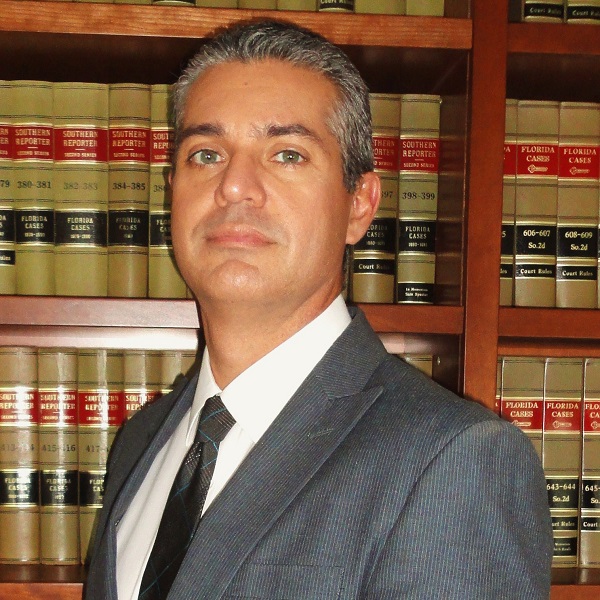EB5 Investors Magazine is pleased to announce the Top Litigation Attorneys. To be eligible, distinguished attorneys needed to perform litigation and related legal services for the EB-5 program.
For more information or to contact any of these professionals, we invite you to view their listings at www.EB5Investors.com/directories.
SCOTT ANDERSEN
ANDERSEN, P.C.

Scott M. Andersen is the principal at Andersen, P.C., a securities regulatory defense law firm. Andersen was formerly a deputy regional chief counsel at FINRA, where he oversaw FINRA enforcement cases prosecuted in the Western United States. Andersen has broad knowledge in regulatory investigations and enforcement actions as a former securities regulator with over 19 years of experience. He has led complex criminal and civil prosecutions for the Investor Protection Bureau at the N.Y. State Attorney General’s office, the NYSE and FINRA. He has represented EB-5 participants, including a regional center, EB-5 issuers and a market intermediary in investigations conducted by the SEC and FINRA.
What trends are you seeing when it comes to EB-5 litigation? Any impact from the new regulations?
The SEC is dedicated to ensuring that EB-5 securities offerings meet the requirements of the federal securities laws. The SEC has focused on whether EB-5 offerings qualify for an exemption from registration, unregistered broker-dealer activities and fraud. The SEC has also sued a number of regional centers and others for fraud relating to EB-5 capital raising, often for misappropriating investor funds. The SEC will continue to closely monitor the industry to protect investors. FINRA is also involved in monitoring its members’ compliance with FINRA rules, such as suitability, AML, advertising, due diligence and supervision.
What has been your most impactful litigation cases, and why?
My practice is focused on assisting clients in addressing regulatory investigations by the SEC and FINRA. Often, EB-5 securities offerings involve immigration, real estate and other professionals who have not had extensive experience in the requirements of the U.S. securities laws and have made mistakes. Addressing errors previously made to bring a program into compliance with the federal securities laws, and explaining the facts and corrective actions to regulators to achieve a good result for a client, improve the reputation of the industry and protect investors.
BOB CORNISH
ANDERSON KILL LLP

Bob Cornish is a shareholder in the Washington, D.C. offices of Anderson Kill LLP, which is based in New York. Cornish routinely handles SEC enforcement, litigation and compliance-related matters for participants in the EB-5 industry, leaning on his experience as a former Series 24 principal with a broker-dealer and as a compliance officer for institutional asset managers. Cornish is a member of the EB-5 Securities Roundtable and is recognized as a “go-to” attorney on broker-dealer compliance and regulatory matters of the industry. Cornish has also been recognized as a Super Lawyer in securities litigation and is rated AV Preeminent by Martindale-Hubbell.
What new trends are you seeing when it comes to EB-5 litigation? Any impact from the new regulations?
Litigation in the EB-5 arena continues to evolve as the industry matures. Industry participants are now more sophisticated in understanding their abilities to seek legal remedies, especially in matters involving marketing and placement agents. Likewise, investors with redeployment issues and those who may have been defrauded are becoming more aware of their options and remedies, not only in the U.S. legal forums, but also in alternative forums such as arbitration and mediation. One should expect continued enforcement focus on EB-5 by the SEC and FINRA in more focused and discrete areas of licensing and compliance procedures in the coming months.
What have been your most impactful litigation cases, and why?
As much of my practice in the EB-5 arena deals with enforcement matters before the SEC, FINRA and state securities regulators, handling these matters are highly impactful. Both industry participants and regulators tend to learn things from each other about their respective roles, which is a good thing on both sides. The EB-5 industry wants knowledgeable regulators who understand the nuances of their businesses. Likewise, industry participants often provide the best “real world” experience for regulators who are often handling issues that may not appear as simple as they may initially seem.
IRA KURZBAN
KURZBAN, KURZBAN, TETZELI & PRATT P.A.

Ira Kurzban is the chair of the immigration department of the law firm of Kurzban, Kurzban, Tetzeli & Pratt, P.A., based in Miami, Florida. He is a former national president and former general counsel of the American Immigration Lawyers Association. He has litigated over 50 federal cases concerning the rights of aliens. Kurzban has extensive litigation experience in investor cases and has been a special counsel to a number of regional centers. Kurzban authors and lectures extensively in the field of immigration law. He holds a Juris Doctor and a master’s from the University of California, Berkeley, and is an adjunct faculty member in immigration and nationality law at the University of Miami.
What new trends are you seeing when it comes to EB-5 litigation? Any impact from the new regulations?
We begin to see a substantial increase in EB-5 litigation in all areas. There are challenges to the regulations; to the counting of derivatives; to the way that USCIS has chosen to define the term “cash” for purposes of an investment. There are also challenges by investors who have understandably grown restless by the long backlogs in adjudications and therefore we see far more mandamus petitions than previously. There are also understandably disgruntled investors who have been defrauded and are taking action along with the SEC to go after people who have committed a variety of fraud and malpractice in the EB-5 areas
What have been your most impactful litigation cases, and why?
We won and recently argued in the Court of Appeals in Washington D.C., Zhang v. USCIS 344 F.Supp.3d 32 (D.D.C. 2018) and Siqing Wang v. USCIS, 366 F.Supp.3d 118 (D.D.C. 2019). We have been successful in scores of mandamus cases that have resulted in USCIS adjudicating and eventually favorably resolving cases on clients’ behalf. We also reversed the termination of a regional center and saved hundreds of investor petitions. Our firm also generally litigates against USCIS, ICE, CBP and DHS in many areas of immigration law. Just recently we won a major victory involving a fraudulent university that was established to entrap foreign students and their advisors.
JOHN P. PRATT
KURZBAN, KURZBAN, TETZELI & PRATT P.A.

John P. Pratt is a partner at Kurzban, Kurzban, Tetzeli & Pratt, PA. He concentrates in all areas of immigration and nationality law, including complex EB-5 federal court litigation. He was admitted to practice in the state of Florida, the state of New York, the District of Columbia, several district courts, the U.S. Court of Appeals for several circuits, and the U.S. Supreme Court. He serves in the board of governors of AILA and is the former president and director in the board of directors of AILA’s San Francisco chapter. Pratt has received AV rating by Martindale-Hubbell. He holds a bachelor’s degree from Florida State University and a Juris Doctor from Tulane Law School.
What trends are you seeing when it comes to EB-5 litigation? Any impact from the new regulations?
As previously predicted, there is an increase in litigation by regional centers, projects, and/or investors based on shifting and undefined USCIS policies, inconsistent adjudications, and arbitrary and incorrect legal and factual denials. In addition, there is a continued increase in litigation by investors against projects due to bad acts, redeployment and management decisions, and other civil commercial actions. I believe that there will be a big increase in representing investors in USCIS I-829 denied petitions in removal proceedings. Mandamus litigation continues to be critical to avoid undue delays in I-526 and I-829 adjudications, and I believe that inconsistent adjudications based on the new regulations will lead to future litigation.
What have been your most impactful litigation cases, and why?
I still believe that the most impactful case Ira Kurzban, the firm, and I litigated is Chang v. U.S., 327 F.3d 911 (9th Cir. 2003), which continues to be the only federal court circuit decision in EB-5 arena. As previously stated, EB-5 involves complex corporate, securities, immigration and job economic methodologies issues that are challenging. We have been fortunate to work in numerous federal court actions in EB-5, and rely on a great team at the firm. Some of the most important cases currently include one that challenges USCIS policy on “debt arrangements,“ one that challenges the policy of allocating EB-5 immigrant visa numbers and one challenging the interpretation of The Child Status Protection Act in the EB-5 context.
JONATHAN D. WASDEN
WASDEN BANIAS IMMIGRATION LITIGATION

Jonathan D. Wasden is an administrative procedures act (APA) litigation attorney, focusing on business immigration issues. His practice combines expertise in the Immigration and Nationality Act, Administrative Procedures Act, Separation of Powers Doctrine, and Federal Rules of Civil Procedure. He began his legal career as a trial attorney in the U.S. Air Force. He then joined the U.S. Department of Justice, where he defended immigration regulations and decisions under the APA. His last position in government was with the Administrative Appeals Office, focusing on consultation and litigation on employment-based legal issues. Wasden now works in private practice, consulting with clients on strategies to overcome immigration denials and appealing cases in federal court under the APA.
What trends are you seeing when it comes to EB-5 litigation? Any impact from the new regulations?
There will undoubtedly be both facial challenges to agency policy and regulations as well as an increase in litigation on individual petition denials and delays of adjudications. The recent policy memo that changes the way the agency processes the Form I-526 will drive both facial and individual attacks in court. The agency failed to consider the impact of redeployment of funds when crafting this new rule, which makes it vulnerable in court. In the short term, individual investors will need to challenge the agency in court to contest the delays caused by this memo.
What have been your most impactful litigation cases, and why?
USCIS is trying to damage legal immigration by delaying the processing of applications. This inexplicable increase in processing times has led to my partner, Brad Banias, and I to challenging more than 50 EB-5 delays in the past three months alone. The agency has typically sought to settle these cases by adjudicating the petitions, usually faster than 60 days. Clients are getting their approvals several years faster than published wait times. I expect the delays to continue, and that clients’ only real option is to fight in court.
DISCLAIMER: The views expressed in this article are solely the views of the author and do not necessarily represent the views of the publisher, its employees. or its affiliates. The information found on this website is intended to be general information; it is not legal or financial advice. Specific legal or financial advice can only be given by a licensed professional with full knowledge of all the facts and circumstances of your particular situation. You should seek consultation with legal, immigration, and financial experts prior to participating in the EB-5 program Posting a question on this website does not create an attorney-client relationship. All questions you post will be available to the public; do not include confidential information in your question.







